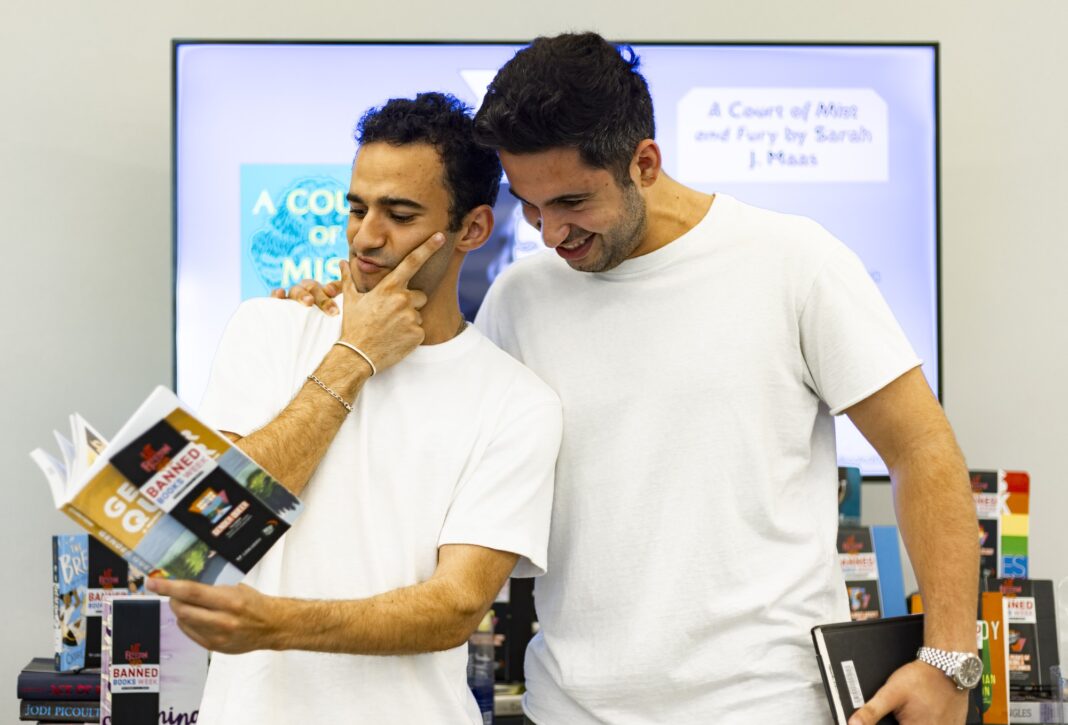
With attempts to censor material in public libraries and schools on the rise, University of Miami students and faculty united during this year’s Banned Books Week in Richter Library to honor intellectual freedom and the importance of free access to knowledge.
“Bans or challenges are primarily about prohibiting access in libraries,” said Lauren Fralinger, co-manager for the Library Research and Adobe Scholars program. “Not everyone can afford to buy as many books as they want, so it’s a way of limiting access that is normally free in communities.”
From the “Satanic Panic” of the 1980s, where religious leaders(?) political orgs(?)attempted to ban fictional books like “Dungeons and Dragons,” to the attempts to ban fantasy novel series “Harry Potter” for its themes of witchcraft in the early 2000s, censorship of literature in the US continues to evolve based on the public’s moral and political opinions, threatening to hinder the free flow of ideas.
“The main thing the University is doing for Banned Books Week is putting up a display in the library showcasing an array of banned books for students to read,” said Fralinger.
During the week of Oct. 1, over 100 banned books were showcased and available in the Richter Library, encouraging students to familiarize themselves with the censored literature and push back against book banning.
The University will continue its efforts to support the freedom of access to literature at The Lowe Art Museum later this year. Local artist Chris Friday is set to unveil an interactive installation inspired by the several book bans across the United States, starting Oct. 20 and running through Feb. 24, 2024.
Utilizing works from a variety of contributing artists and currently banned literature, Friday will delve into ways in which artists of color are navigating topics such as race, gender, class and sexuality.
According to the American Library Association (ALA), there has been a 20% rise in book challenges since 2022, marking the highest recorded number since their data collection started more than two decades ago.
With 151 challenges for LGBTQIA+ sexually explicit content, the most challenged book of 2022 was “Gender Queer: A Memoir” by Maia Kobabe. Her autobiography describes her journey of self-identity and struggle with her own gender growing up as someone who identifies as non-binary.
Concern over LGBTQIA+ or racial content has been the most popular topic for challenged books within the last few years.
According to an analysis done by the Washington Post, 43 percent of challenged books had LGBTQIA+ themes or characters, and 36 percent targeting themes or characters of color and the issue of race and racism.
An increased amount of individuals are fearing these books will give the wrong ideas to children.
Students and staff at the University of Miami are working to counter this narrative through their display of challenged literature and exhibits and promoting the freedom to read and have access to information.
“Book banners want to silence people,” said Fralinger. “Speak out on behalf of libraries and to have a free exchange of ideas, because the only thing you can do to counter that narrative, is with your own.”
By participating and promoting challenged literature during Banned Books Week, students and staff are fostering an environment where knowledge and communication can flow freely, igniting important conversations and fostering a more inclusive and informed society at the University of Miami.
“The best thing you can do is be loud in your defense of reading, knowledge, and democracy. They are trying to shut down free spaces and the free flow of communication of ideas, which is really what underpins our society.” said Fralinger.






